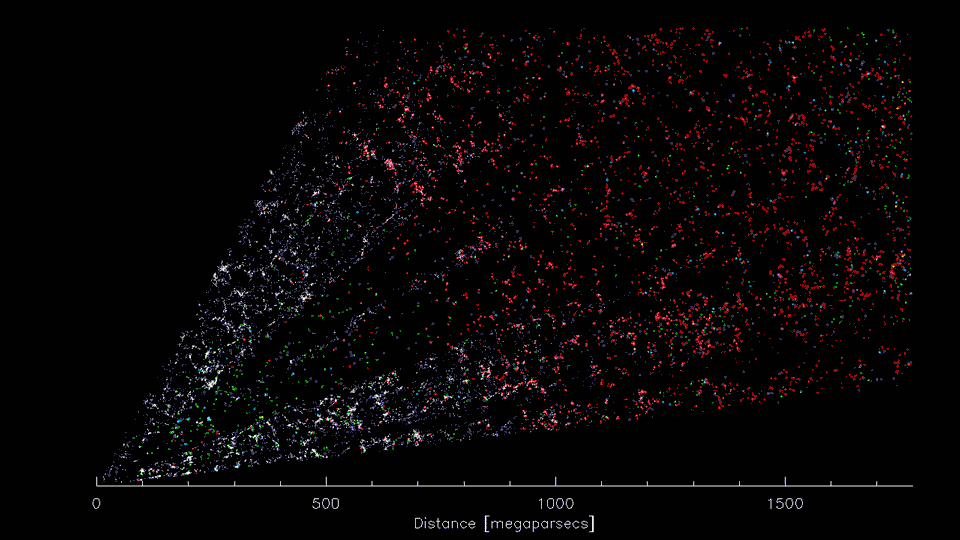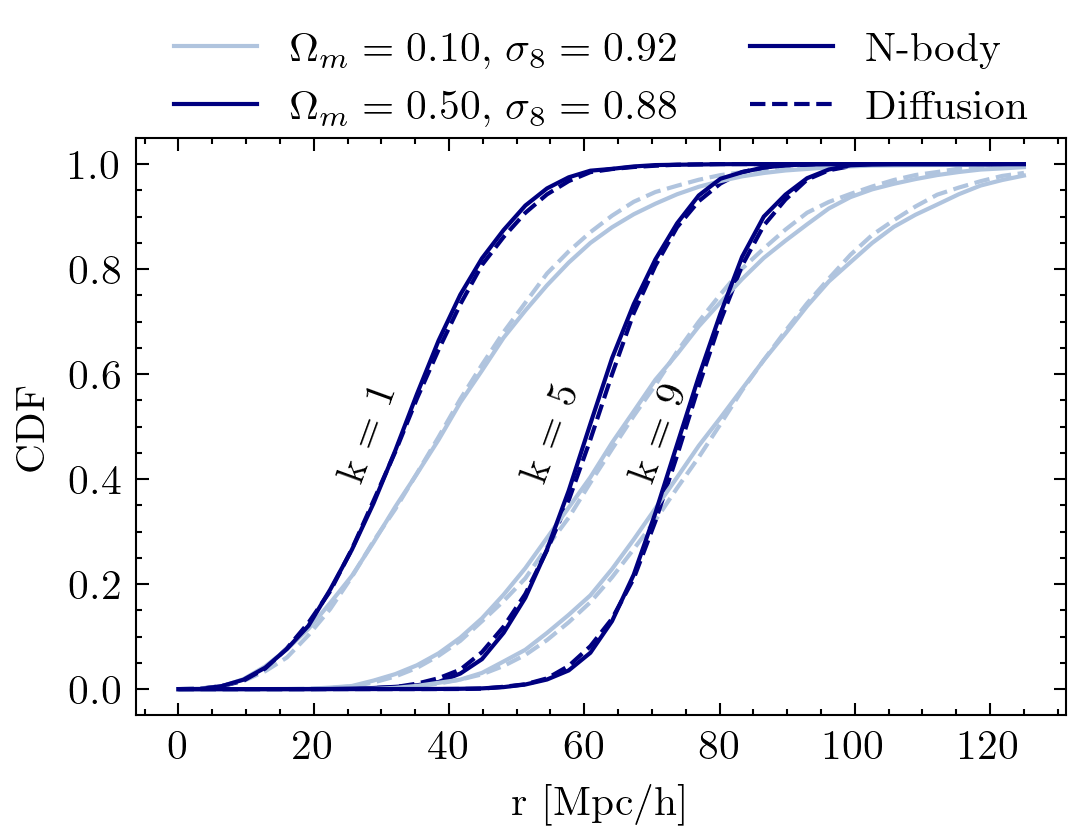Carol Cuesta-Lazaro (IAIFI Fellow)
and Siddarth Mishra-Sharma (IAIFI Fellow)

Diffusion generative modelling for galaxy surveys



Initial Conditions of the Universe
Gaussian RF
Laws of gravity
3-D distribution of galaxies
Which are the ICs of OUR Universe?
Primordial non-Gaussianity?

3-D distribution of dark matter
Is GR modified on large scales?
How do galaxies form?














Neutrino mass hierarchy?
ML for the Large Scale Structure of the Universe:
Carol's wish list
Generative models
Learn p(x)
Evaluate the likelihood of a 3D map, as a function of the parameters of interest
1
Combine different galaxy properties (such as velocities and positions)
2
Sample 3D maps from the posterior distribution
3


Reverse diffusion: Denoise previous step
Forward diffusion: Add Gaussian noise (fixed)



Diffusion models
A person half Yoda half Gandalf



Diffusion on point clouds
Reverse diffusion: Denoise previous step
Forward diffusion: Add Gaussian noise (fixed)

Cosmology
Node features coordinates (+mass, velocities)
Input
Noisy halo properties
Output
Noise prediction
Graph Neural Networks as score models
kNN (~20)




Halo Mass Function
Velocity
Mean pairwise velocity

Prior loss
Diffusion loss
Reconstruction loss
Be a true Bayesian: Always maximise the likelihood
arxiv:2107.00630
arxiv:2303.00848
Maximum Likelihood = Denoising
Setting tight constraints with only 5000 halo positions



+ Galaxy formation
+ Observational systematics (Cut-sky, Fiber collisions)
+ Lightcone, Redshift Space Distortions....




Forward Model
N-body simulations
Observations

Optimise information on cosmological parameters
(robust) surprises
The challenge for field level inference